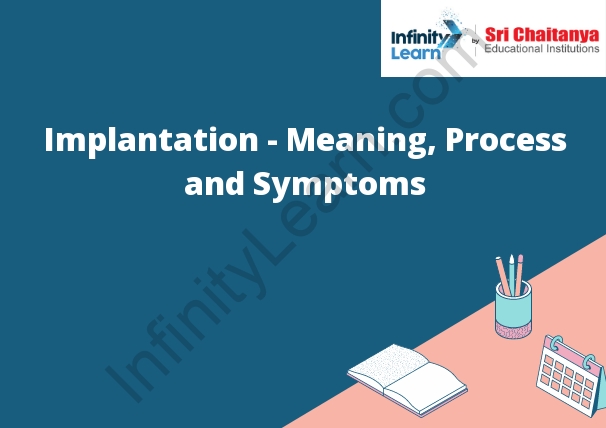Table of Contents
What is the Meaning of Implantation?
Implantation – Meaning:
- The implantation process is when the fertilized egg attaches to the lining of the uterus. This generally happens about six days after fertilization. The egg will implant in the uterine wall and begin to grow.
- implantation may refer to the actual process of a fertilized egg attaching to the uterine wall. To others, implantation may refer to the moment when a pregnancy is first confirmed. Still others may see implantation as the beginning of a pregnancy, from the time of conception until the fetus is viable outside the womb. Ultimately, the meaning of implantation is subjective and may vary from person to person.

Process of Implantation
- A process that is both amazing and miraculous is implantation. Implantation occurs when the embryo attaches and embeds into the lining of the uterus. This usually happens around six days after fertilization. The process of implantation is a result of the embryo releasing a hormone called hCG (human chorionic gonadotropin). This hormone signals the mother’s body to provide a place for the embryo to implant and to start the process of nourishing the embryo.
- The embryo begins the process of implantation by releasing hCG and then begins to move down the fallopian tube towards the uterus. Once the embryo reaches the uterus, it will attach itself to the lining of the uterus. This process happens in three stages. The first stage is called adhesion and is when the embryo attaches to the uterine wall. The second stage is called invasion and is when the embryo begins to embed into the uterine wall. The third stage is called anchorage and is when the embryo is fully embedded into the uterine wall.
- The process of implantation is a complex process that is still not fully understood. However, scientists do know that the embryo releases hCG which signals the mother’s body to provide a place for the embryo to implant and to start the process of nourishing the embryo. The embryo begins the process of implantation by releasing hCG and then begins to move down the fallopian tube towards the uterus. Once the embryo reaches the uterus, it will attach itself to the lining of the uterus. This process happens in three stages. The first stage is called adhesion and is when the embryo attaches to the uterine wall. The second stage is called invasion and is when the embryo begins to embed into the uterine wall. The third stage is called anchorage and is when the embryo is fully embedded into the uterine wall.
- The process of implantation is a complex process that is still not fully understood. However, scientists do know that the embryo releases hCG which signals the mother’s body to provide a place for the embryo to implant and to start the process of nourishing the embryo.
What are the Symptoms of Implantation?
The symptoms of implantation are:
- Implantation bleeding – This is spotting or bleeding that happens around the time of implantation, which is about six to 12 days after ovulation. It may be light pink or light brown in color, and it’s often mistaken for a menstrual period.
- Cramping – Some women experience cramping around the time of implantation. This is caused by the embryo embedding itself in the uterine wall.
- changes in the breasts – Your breasts may feel tender or swollen around the time of implantation.
- changes in the cervix – The cervix may become softer and more open around the time of implantation.







